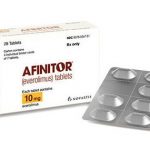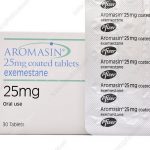
Contents
What Settles an Upset Stomach Quickly?
Getting rid of a stomachache in five minutes may not always be possible. However, some remedies that may help settle an upset stomach include drinking water or clear liquids, eating small and frequent meals, avoiding greasy or spicy foods, getting plenty of rest, and avoiding tobacco and caffeine. Over-the-counter medications such as antacids or antidiarrheal drugs may also provide relief.
The best ways to settle an upset stomach quickly include:
- Ginger: Has natural anti-inflammatory properties and is a natural remedy for an upset stomach. It can help soothe nausea, vomiting, and diarrhea. It can be consumed in the form of ginger tea, ginger chews, or fresh ginger.
- Peppermint: Known for its calming and soothing effects on the stomach and intestines. It helps relax the muscles in the digestive tract, which can help relieve cramping, bloating, and gas. Peppermint can be consumed in the form of peppermint tea or peppermint oil capsules.
- Probiotics: Beneficial bacteria that live in the gut and help maintain a healthy balance of bacteria in the digestive tract. They can help reduce inflammation and improve digestion, which can help alleviate symptoms of an upset stomach. Probiotics can be found in fermented foods such as yogurt and kefir or in supplement form.
- Bismuth subsalicylate: An over-the-counter medication that is effective in treating stomach upset and diarrhea . It can help soothe upset stomachs and reduce symptoms such as nausea, vomiting, and diarrhea.
- Bananas: A natural antacid that can help soothe an upset stomach by neutralizing stomach acid and reducing inflammation. They contain potassium, which can help replace electrolytes lost due to vomiting or diarrhea.
- Rice: A simple, easily digestible carbohydrate that can help settle an upset stomach. It can help absorb excess stomach acid and soothe the stomach lining.
- Clear liquids: Water, broth, and ice chips can help rehydrate the body and replenish fluids lost due to vomiting or diarrhea.
- Rest: Sometimes, when your stomach is upset, the best thing you can do is rest. Avoid any activities that might aggravate your stomach, such as eating spicy or fatty foods, and give your body the time it needs to heal.
- Other home remedies:
- Clear soup broth or bouillon
- Popsicles
- Caffeine-free tea
If your upset stomach persists or is accompanied by severe pain or vomiting, consult a doctor.
How do you get rid of a stomach ache in 5 minutes?
To get rid of a stomach ache in five minutes, you can try a few things. Lie down in a comfortable position and take slow, deep breaths. This can help relax your body and reduce muscle tension, which can contribute to stomach pain. You can also try applying a warm compress to your stomach, such as a heating pad or warm water bottle wrapped in a towel. This can help alleviate pain and cramping. Moreover, drinking a cup of warm water with a teaspoon of honey and a squeeze of lemon juice can help to soothe an upset stomach. Additionally, you can try taking an over-the-counter antacid or pain reliever, such as ibuprofen or Tums. Consult a doctor before taking any medications.
Over-the-counter medical treatment
- For gas-related pain, OTC medication like Mylanta and Gas-X (which contain the ingredient simethicone) can help get rid of gas and bloating.
- Gastroesophageal reflux disease (GERD) can cause stomach aches and burning sensations (heartburn), and an antacid or acid reducer like Pepcid AC or Zantac 75 can help.
- A mild OTC stool softener or laxative can help relieve constipation.
- Abdominal cramps can occur due to diarrhea. Medicines like Pepto-Bismol, which contains loperamide or bismuth subsalicylate, can help reduce diarrhea and cramps.
- Pain relievers, such as Paracetamol, and Ibuprofen, can help reduce abdominal pain and the painful cramps caused due to several conditions. It may be combined with anti-cramping medications.
Lifestyle and home remedies
- Anti-inflammatory foods:
- Eating foods that have anti-inflammatory properties can reduce abdominal pain . These foods include blueberries, squash, cherries, capsicum, tomatoes, cold-water fish high in omega-3 fatty acids, beans, green leafy vegetables, and almonds. These foods also improve overall body health. It’s advised to incorporate these foods throughout the year instead of just during the periods. Sugary food, fried and fatty foods, white bread or pasta, alcohol, caffeine, and tobacco can increase cramps.
- Chamomile tea, peppermint, fennel, cinnamon, ginger, turmeric root, and dill are some herbs that have anti-inflammatory effects and can reduce cramps. Sipping two cups of tea containing these herbs per day can help reduce abdominal pain. A small piece of ginger and/or turmeric root may be added to hot water or herbal teas, making it an effective cramp-relieving drink.
- Applying a heating pad, hot water bottle, hot towel, or heat wrap over the abdomen and back helps relax the muscles and relieve abdominal cramps and pain. The temperature should ideally be 104°F. Taking a hot bath with bubbles and essential oils or hot showers can also help.
- Chewing food slowly, not talking while eating, ensuring the food is well cooked, not lying down immediately after eating and reducing excess coffee and tea intake.
- Gentle exercises like yoga, stretching, and tai chi can help reduce stress and relax the abdominal muscles. Physical activity can help relieve gas, bloating, and constipation .
QUESTION
What are the causes of stomachache?
Abdominal pain may be acute or chronic, continuous or intermittent, or mild or severe and can have many causes, such as:
- Irritable bowel syndrome (IBS)
- Gas or flatulence
- Food allergies
- Peptic ulcer
- Gastritis (infection of the stomach)
- Constipation
- Diarrhea
- Abdominal muscle strain or pull
- Gastroesophageal reflux disease (GERD )
- Hernia
- Pelvic inflammatory disease
- Appendicitis
- Cancer of the stomach, pancreas, liver, bile duct, gallbladder, or immune cells
- Pancreatitis (inflammation of the pancreas)
- Cholecystitis (inflammation of the gallbladder)
- Decreased blood supply to intestines caused by a blocked blood vessel
- Pregnancy complications
How to soothe a child’s stomach ache
If your kid complains of tummy pain, you may be able to help them with some home remedies.
Stomach aches are common in children. Whether it’s from indigestion, constipation, or even a viral infection, most stomach aches in kids are not serious and symptoms will usually resolve on their own.
You can try soothing your child’s stomach ache with one of these home remedies:
- Make your child lie face down and let them rest until their stomach pain resolves.
- Apply a warm compress or heating pad on their stomach.
- If the stomach ache is caused by spicy food, try giving them vanilla ice cream.
- If the stomach ache is caused by constipation, try giving them yogurt.
- Give them sips of warm water to drink.
- Avoid carbonated, caffeinated, fatty, or sweetened liquids, such as sodas, tea, coffee, milk, and sports drinks .
- If your child asks for a soft drink, choose one without caffeine. Shake the fizz out before serving.
- Initially, put your child on a liquid diet. Offer them clear fluids, such as water, fruit juices mixed with water, ginger ale, or a simple broth.
- As the pain starts to go away, you can introduce bland foods to your child’s diet , such as plain bread, dry toast, rice, banana, and saltine crackers.
- Encourage them to go to the bathroom for bowel movements.
- Fennel seed and simethicone drops may be available over-the-counter. You can try giving your child these drops in a recommended dose.
- Do not give your child pain medications without asking your child’s pediatrician first.
If your child often suffers from indigestion and stomach pain frequently, they may have intolerance or allergy to certain foods. Keeping a food diary can help you determine which foods may be triggering your child’s stomach aches.
When to see a doctor for your child’s stomach ache
As you try these home treatments for your child, you should also monitor them to see whether they are helping.
Mild stomach aches will usually go away pretty quickly, but be careful not to ignore other serious symptoms that may accompany stomach pain. Contact your child’s doctor right away in the cases of:
- Severe stomach pain. If your child keeps crying and cannot be distracted by anything, their pain may be severe.
- Abdominal pain that continues after 24 hours.
- Abdominal tenderness (pain on the abdomen when you press it).
- Bloody stools. This can be a sign of a serious infection or an intestinal disease, such as inflammatory bowel disease (IBD).
- Diarrhea that lasts for more than 3 hours.
- Vomiting for longer than 24 hours.
- Bloody vomit.
- Green vomit. If your child has an allergy to some food, their vomiting may appear green. This is a sign of anaphylaxis, which is a severe allergic reaction. Dial 911 and get medical help.
- Abdominal pain in the right lower side of the belly. This can be a sign of appendicitis .
- Fever and a bad cough. These symptoms may indicate pneumonia.
- Painful urination. Your child may have a urinary tract infection (UTI).
- High fever or excessive sleepiness (or drowsiness). Stomach ache with any of these signs may point out to a serious infection that has led to low blood pressure or blood loss.
- Groin pain (if your child is a boy). This may be caused by testicular torsion, which is the twisting of testes that results in loss of blood supply to the testes.
- New rashes.
By clicking Submit, I agree to the MedicineNet’s Terms & Conditions & Privacy Policy and understand that I may opt out of MedicineNet’s subscriptions at any time.
By clicking Submit, I agree to the MedicineNet’s Terms & Conditions & Privacy Policy and understand that I may opt out of MedicineNet’s subscriptions at any time.


